
ABSTRACT
The National museum of architecture is a project proposed by Greha along with the council of architecture, INTACH and Indian Institute of architects. The site for the project is in Lado Sarai, New Delhi, 1km away from Qutub Minar.
The idea of this thesis is to explore and find out what an architectural museum should aim to do. The understanding of architecture varies between architects and the public. Every person is directly or indirectly affected by any piece of architecture, just that majority of them don’t realize what is it about architecture that’s affecting them and how. They appreciate/criticize architecture consciously/sub-consciously at times without understanding why it is the way it is. This difference in understanding between the architect and his/her subject (any person getting affected by architecture) needs to be brought to the same level by providing a platform that brings them together. This museum will become a centre for knowledge for everyone visiting it. It will become an icon that people want to see when they visit the city of Delhi. It will become an inclusive public place for people from all backgrounds to gather and talk about architecture. It will become a place of education for aspiring architects to do their research and understand architecture. Most importantly, it will become a place that is important to city without disturbing the city fabric. It should stand out not in terms of its form, but in terms of the spatial experience. The architectural expression will be such that it reflects the past, present and the future of architecture.
The place will empower architects as they receive better acknowledgment and appreciation for their works.
The museum is meant to house information about other buildings so that the visitors understand and learn why they appreciate or they don’t when visit a piece of architecture. It might be known as the guardian of heritage. It might be known as a centre of knowledge for those who wish to know about architecture. It might be a platform for people to connect to each other through the exhibits and spaces. Whatever this museum is identified as will be a reflection of what it aims to do.
PROPOSITION: This thesis aims to connect the society to architecture on a level that bridges the gap between the understanding of the architecture between the architects and their victims (referred to anyone getting affected by any piece of architecture).
The museum will exhibit the architecture marvels of the past, accomplishments of the present and the vision for the future. The experience will involve weaving of all the three phases of time, a time-line to dive into. This experience of a time-line will be translated into architecture. Therefore, the museum will be dedicated to both historic and contemporary works, it will be journey from certainty to uncertainty which will further get translated into the architecture of exhibition spaces, site planning and the building form. Major functions:
1. LIBRARY: Library provides services to the public and contain large number of books or volumes related to all aspects of architecture including biographical information about renowned architects.
2. CONVENTION CENTER: Auditorium, Multipurpose hall and exhibition galleries are largely public function, people- intensive components. These spaces allow events like seminars, lectures, film-screenings, launches of new proposals, etc.
3. MUSEUM: Museum is an institution that cares for a collection of artefacts and other objects related to subject which are available for public viewing through exhibition that may be permanent or temporary. The museum will house various galleries showcasing the historic works of architecture to the traditional-vernacular to the contemporary architecture. It will house drawings, models, photographs and films showing depicting design as well as the construction process.
i. Gallery of ancient history (permanent)
ii. Gallery of modern architecture (permanent)
iii. Gallery of contemporary architecture (temporary)
iv. Gallery of contemporary architecture (temporary)
v. Gallery of the futuristic visions (temporary)
4. RESEARCH CENTER: It is consisting of R&D labs, innovation centres, discussion rooms, workshops, lecture rooms all programmatic element associated with the activities involve in the pursuit and dissimulation of knowledge.
FORMULATION OF THE AREA PROGRAM:
Concept for the formulation of the area program according to the requirements of the user groups that the museum will visit the museum.
For students and architects: CONVENTION/CONFERENCING FACILITY: Auditorium and multi-purpose halls to hold lectures and such events Meeting rooms
For students and research scholars:
RESEARCH CENTRE: Research and Design labs to provide a kind of a co-working space for researchers and students. A library containing books on all subjects of architecture and archival drawings.
For architects and public:
MUSEUM: Exhibition galleries containing exhibits of historic architecture, modern architecture, contemporary architecture and temporary galleries allowing space for future interventions.
For Research scholars and public:
PUBLIC FACILITIES: Residential facility containing guest rooms for research scholars and tourists. Spaces like cafes allowing the two to interact.
SITE: A 1.3-hectare, vacant
INSTITUTIONAL SITE, belonging to the Delhi Development Authority (DDA) has been identified. This is located in Lado Sarai, close to the Qutb Complex and the Indian Institute of Technology, Delhi with good access from the Mehrauli Badarpur Road.
DEVELOPMENT CONTROLS:
LANDUSE: Public/semi-public (Socio-Cultural institution)
TOTAL AREA: 12800 sqm
MAXIMUM GROUND COVERAGE: 35%
MAXIMUM FLOOR AREA RATIO: 120
MAXIMUM HEIGHT: 26m
PARKING: 2 ECS per 100 sqm
SETBACKS: 9m on all sides (NBC 2016)
AREAS OF RESEARCH:
1. MEDIUM: In a museum of architecture, it is important to understand the medium through which architecture will be exhibited. It may be models, drawings, photographs, digital media and also virtual reality. Therefore, it will be required to be specified what is needed in this case.
2. PROGRAMMATIC CONTENT: It will also be necessary to study the programmatic content in order to evolve an area program. The study shall also focus on the sub-divisions and inter-relationships of each component.
3. REFLECTION OF TODAY: The museum should reflect the present, therefore there will be a need to study how are the buildings such as museums and research centres which are meant for public/ semi-public use being designed today, in addition to the study of the ones which have been significant since a number of years.
RESEARCH AND DESIGN:
The medium of displaying information is majorly responsible for its identity and for drawing people to the museums. In case of museums dedicated to archaeology, the display objects are presented in the condition that they were found in. This holds true for a number of museums which display historic objects, documents or maps. Art museums display objects in the mediums used by respective artists. Therefore, the medium was not something that could be controlled in every museum. However, as the technology is growing, there has been a revolution in field of exhibiting. Digital technologies have found a home in the modern museum in the forms of interactive touchscreen kiosks, CD-ROMs, computer games, largescreen installations and videowalls with multiple images, digital orientation centers, “smart badge” information systems, 3-D animation, virtual reality, and increasingly sophisticated museum web sites (Griffiths, 1999). This has changed the physical character of the museum. Be it historic museums, art museums, science museums or any other, people are exploring new ways of exhibiting artifacts and information by prioritizing the USER EXPERIENCE. In case of a museum of architecture, one wonders about the possibilities of mediums through which information can be displayed. A recent architectural exhibition organized in 2018 at Mori Art museum (Tokyo) on ‘Japan in architecture’ displayed information through models of all scales, installations, drawings, photographs as well as digital display, interactive touch screens and 3D projections. The Van Gogh Museum’s recent display using Sensory4 technique is the latest attempt at using technology to revolutionize museum experience. Van Gogh’s works are projected on a large scale on walls allowing the users to notice every detail and have an experience of a lifetime. Exhibition held at NGMA in 2014 dedicated to B.V. Doshi’s works recreated some parts of his buildings on large scale so that the visitors can experience the same. Another intervention in the field of exhibitions is virtual reality. Taking the users to a different space virtually to make them experience the scale and proportions of it. This can be very important to the field of architecture. NMOA will be not just be a museum but a part of the network of museums all over the country. DesignXdesign exhibition, 2019, held in Delhi consisted of a Virtually reality exhibit in which one could virtually change the interiors of the room they are standing in. The building needs to be a reflection of the today in the sense that it also glorifies the historic achievements as well as paves way for future interventions. NMOA will consist of functions that allow preservation, exhibition and research of information/objects of architectural importance. In addition to this, it will also support and encourage conversation/interaction among architects and the public.
The strong context with a dense urban village on one side of the site and open green land on the other requires the museum to be sensitive to this urban fabric. Thus, the massing and design has been approached such that it responds to its immediate context as well as the site itself. The placement of the open and the built needs to respond to the context around it as well as the placement of the functions. The idea of placing a large plaza in the front has been derived from the concept of an ever-changing space which is visible from the main road, it will house temporary exhibits that will keep on changing. This gives a dynamic nature to the front face. The corner opening towards the main road ensures a visual connection by providing the passersby with glimpses of exhibitions. The plaza may be used as a semi-open exhibition space. The central opening towards the Phirni road becomes the main entry to the complex. This establishes a visual axis with another opening towards the Lado Sarai village. This visual axis further divides the site into two parts, across which all the functions can be well-distributed. On one side are the functions which are mostly public like the museum galleries and cafes, on the other side towards the main road are semi-public functions in the sense that they will be used mostly by research scholars, architects and students who visit the centre for research purpose. In addition to the research centre, there is a convention centre for conferencing and lecture purposes. This centre may be accessed directly from the Phirni road via the rear entry leading to the lobby of the Convention centre or it may be accessed from within the internal courtyard. Towards the most private corner (NW) of the site is the guest house with a drop off from an external road as well as access from the internal courtyard. The library, research centre and museum mass facing towards the green patch of land which symbolizes the growth. In similar manner, the guest house and the convention were placed according to the context. The terraces in the museum are also placed considering the same approach as the plaza in the front. These are supposed to provide space for open-to-sky temporary exhibitions. The ever-changing nature of these exhibits will also add to the dynamic nature of the facade. As one enters the museum block by crossing the connection bridged with the drop off, there is an option to use the escalators or elevators to move between any two floors. The ground and the first-floor house temporary galleries with circulation such that the entry and exit point is the same (the internal gallery circulation can be seen in the floor plans shown later). Second, third and fourth floors house permanent and temporary exhibitions with circulation starting and ending at different points in order to maintain flow of movement particularly in the U-shaped plans and eventually link with the exit core as well. The museum circulation ends on the fourth floor as one reaches the core to lead them down to the lobby exiting out to the drop off area and also allowing them to collect their belongings from the cloak room. The strategic placement of the museum shop is also in the same area to attract the visitors as well as passersby to the shop. The drop off area also connects to the plaza in the front giving an option to the visitors to look at the exhibits over there or have a meal/snacks at the restaurant. In addition to this F&B facility, there is a small, not-so-heavily serviced cafe on the top floor with the view of the surrounding context. The front plaza leads down to the convention centre as well through the stepped courtyard. The guest house facility can also be accessed through the courtyard.
FACADE TREATMENT:
The Internal facade and section depict the traditional architecture and expression. The facade will consist of traditional windows/doors as a part of exhibits popping out in small boxes. Functionally, these boxes are balconies which are supposed to be points of pause within the museum allowing the visitor to stop by and take a break in these naturally lit balconies. External facade is reflective of the present and the future through a very contemporary look. A dynamic facade helps reduce the heat gain using rotatable panels made out of aluminium jaali and solid aluminium sheet. These panels provide the external facade with a continuous and uniform skin. The panels are rotatable mostly where there are openings inside. The panels outside solid walls are mostly fixed to save energy. Facade for housing features triangular shading devices on two sides of the room windows. Since, it a South-east facing facade, the idea of these shading devices is to protect the building from the southern sun.
MODELS
SHEETS


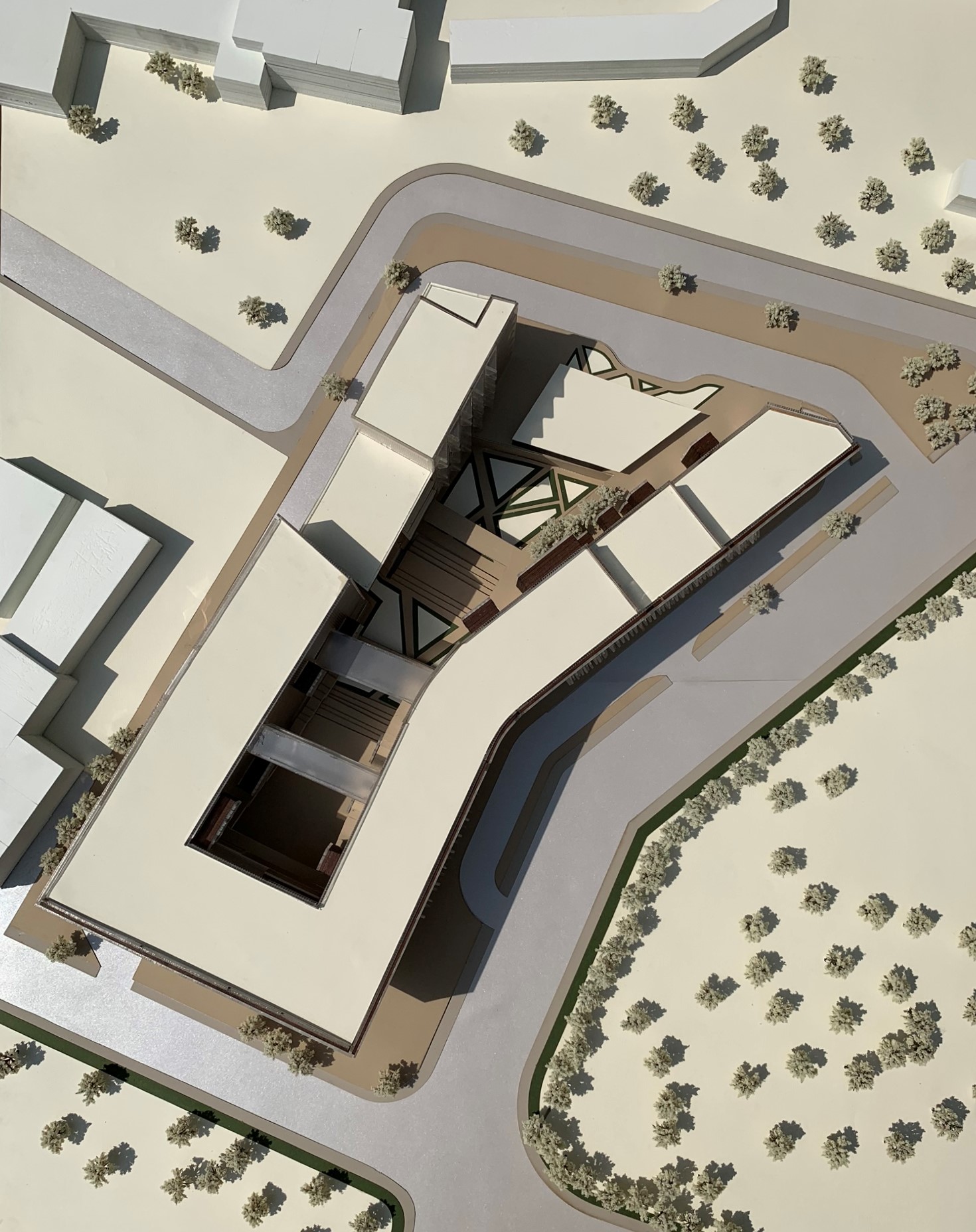

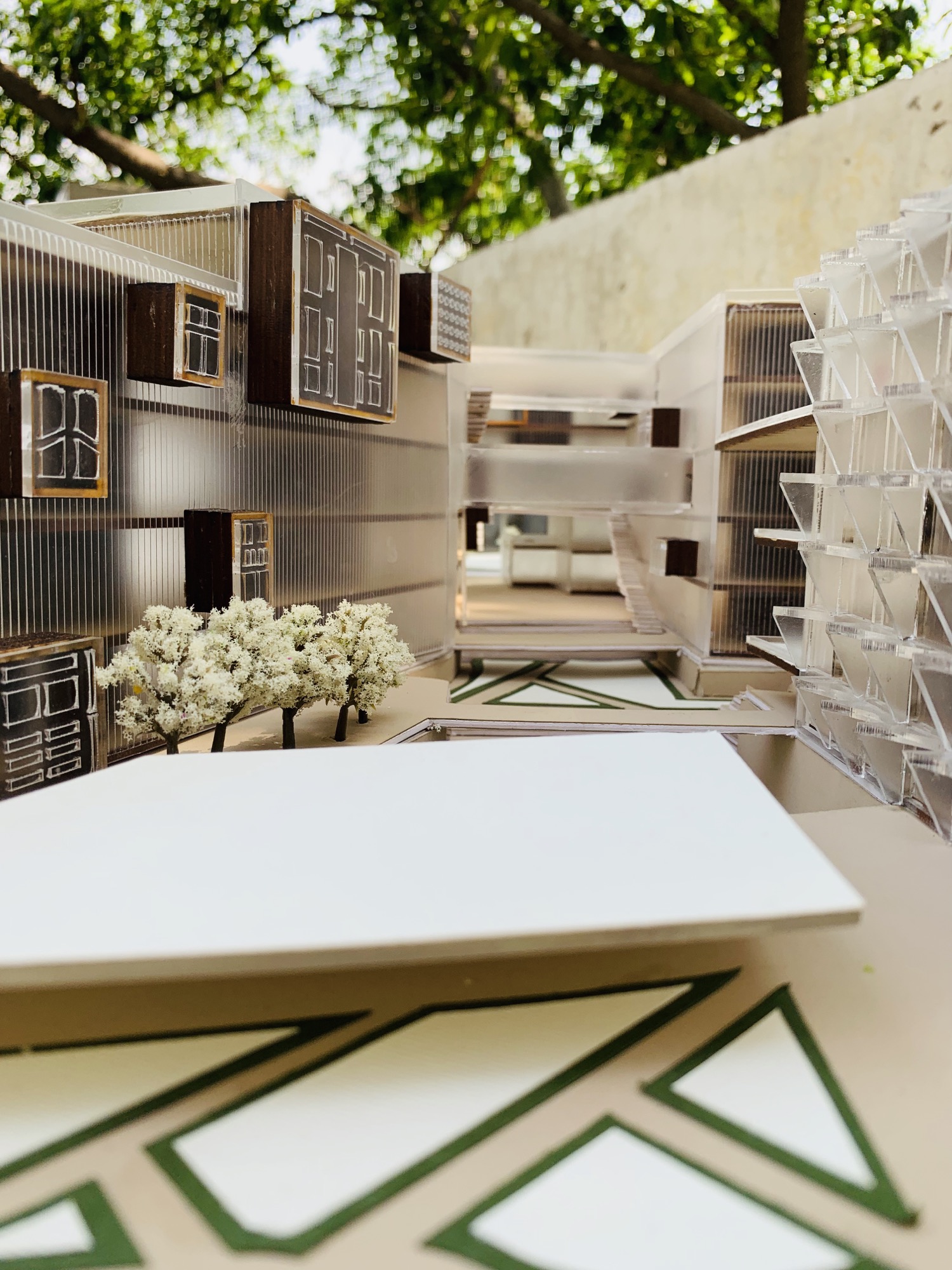

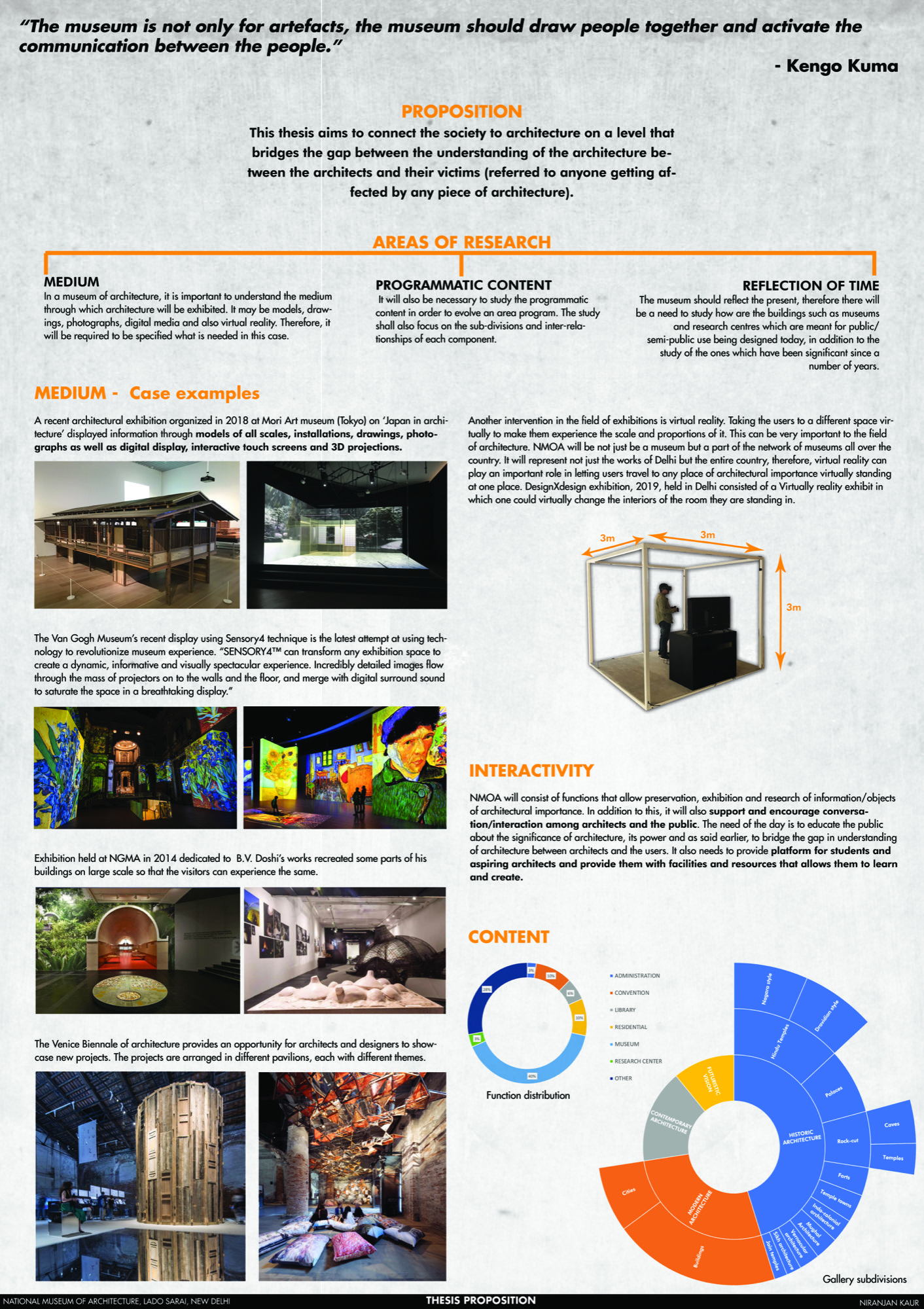


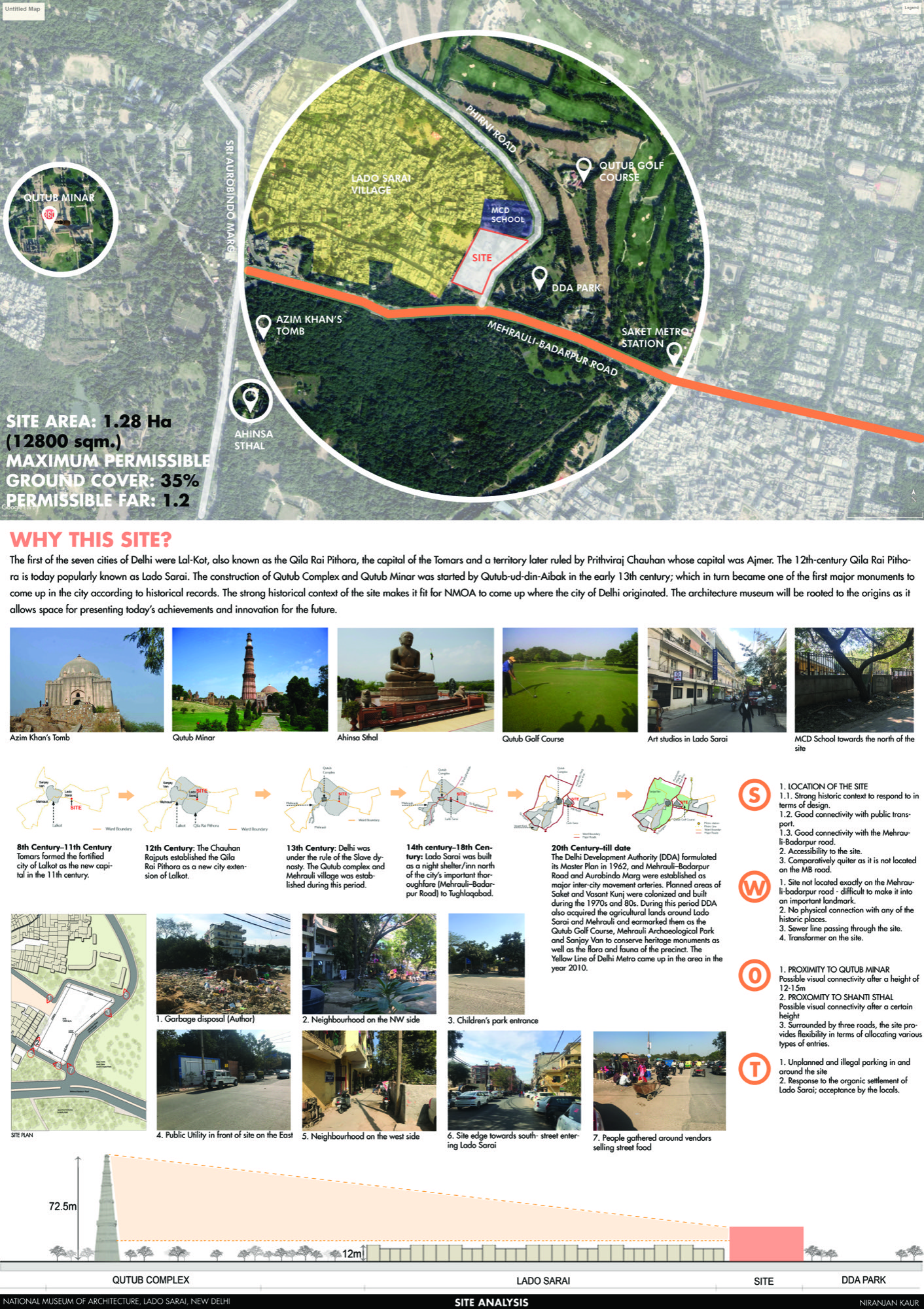

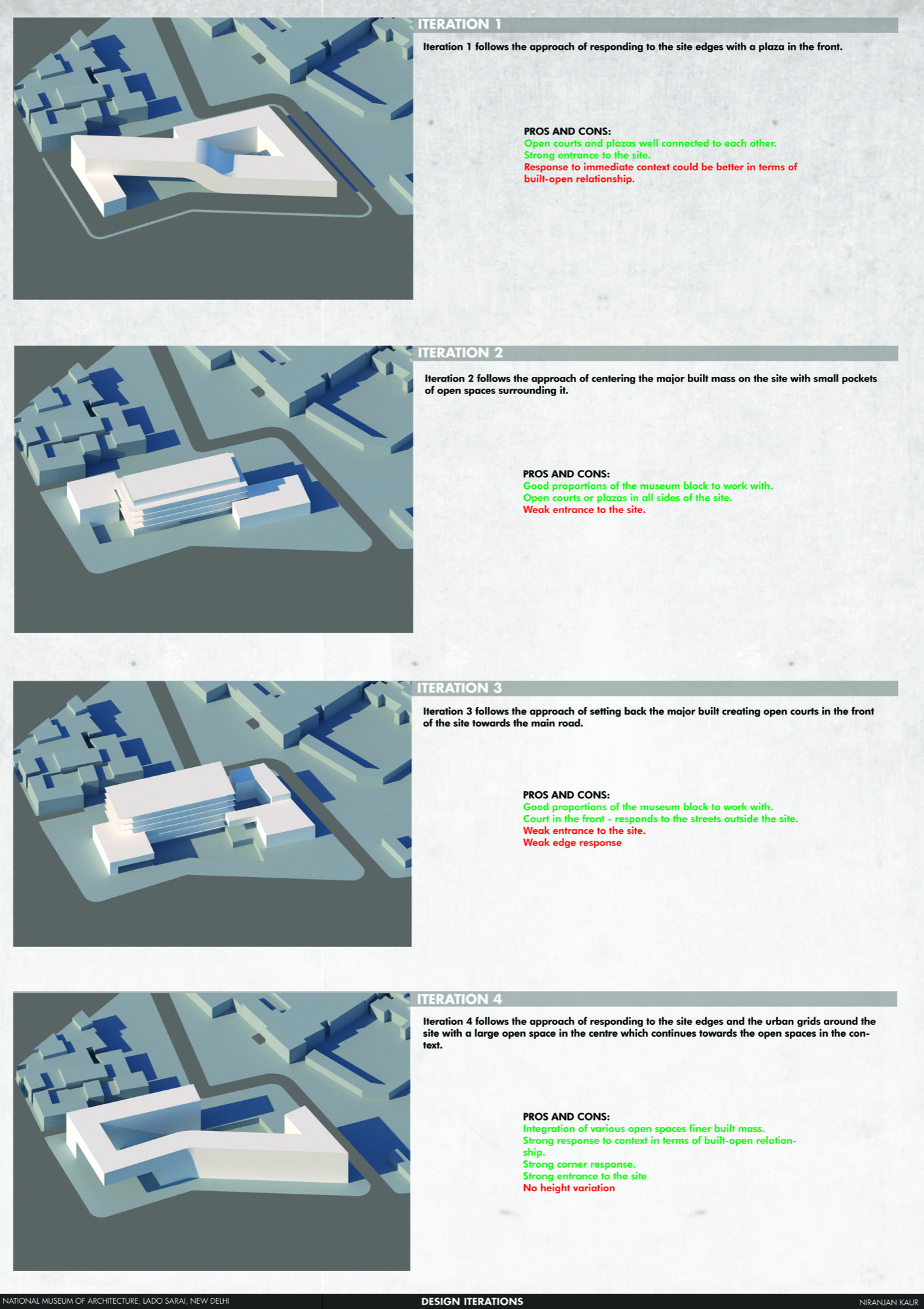
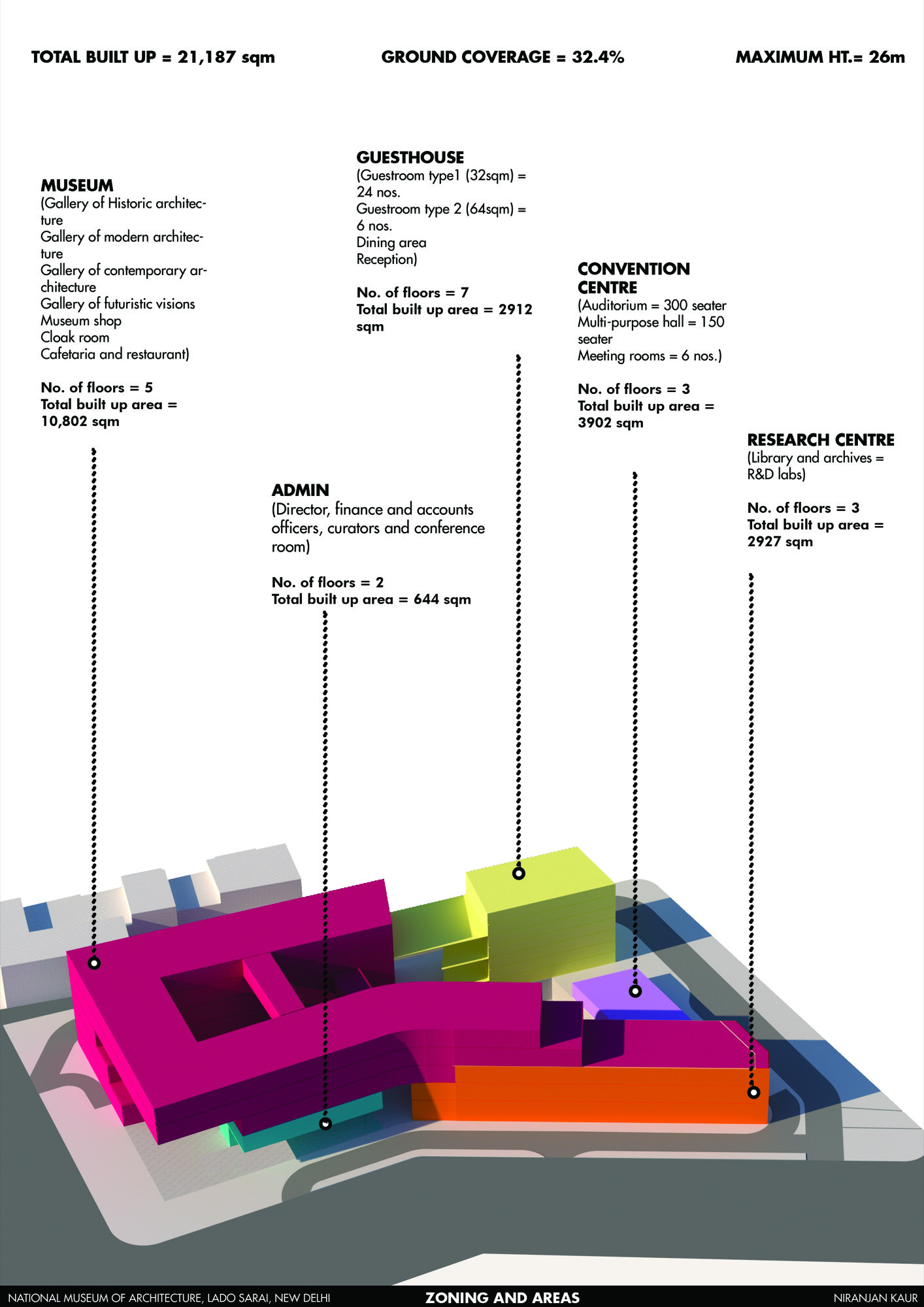
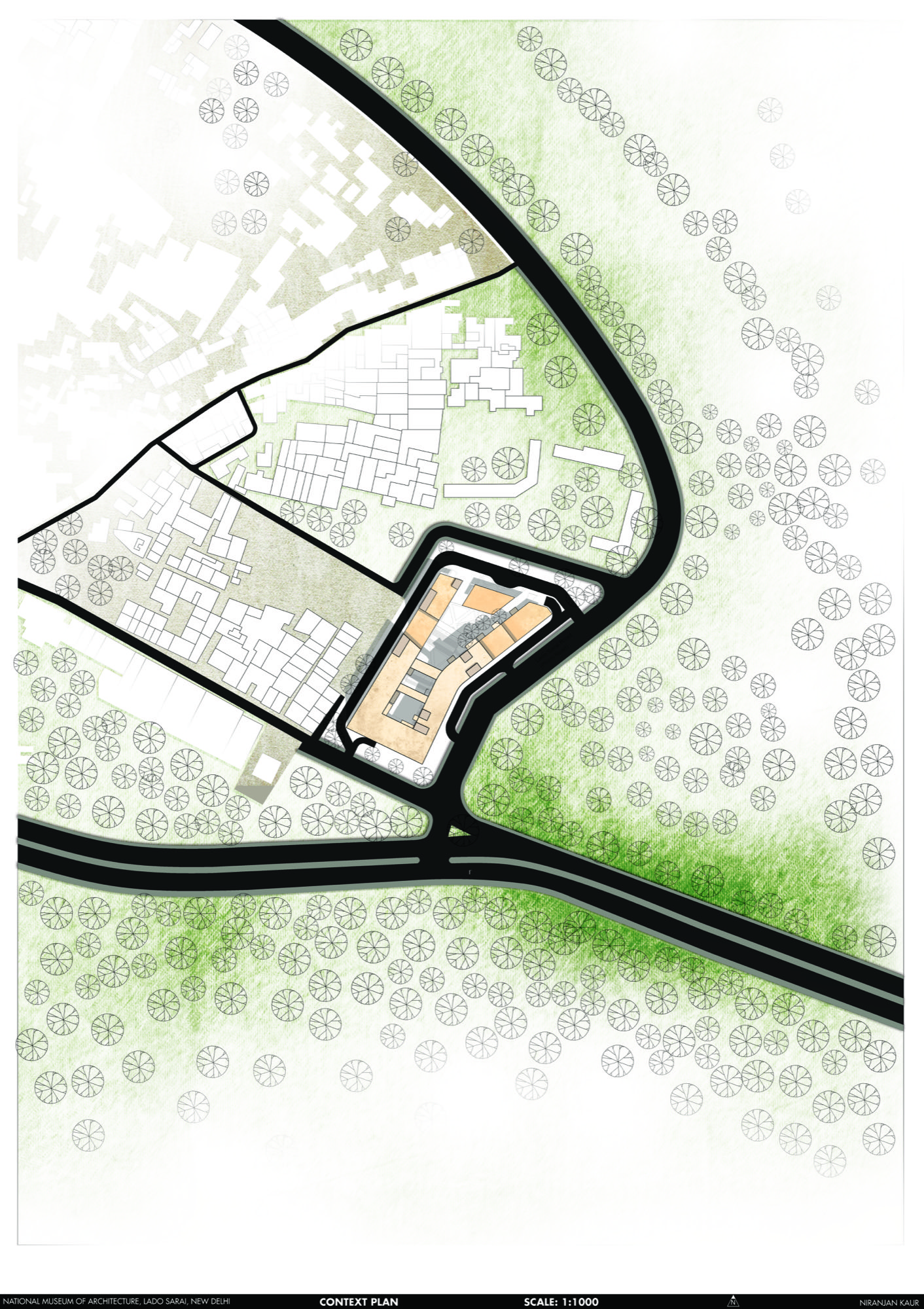
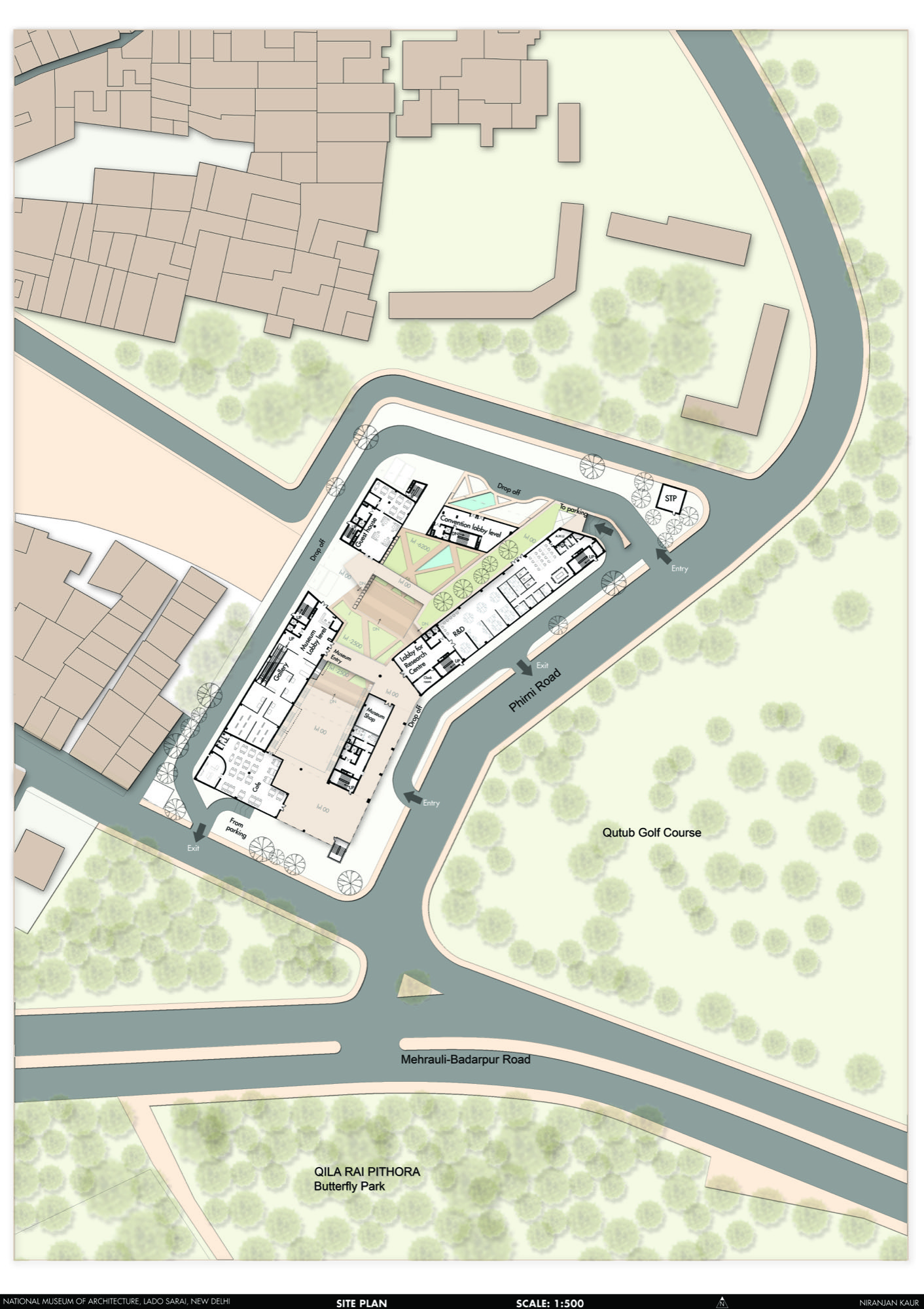
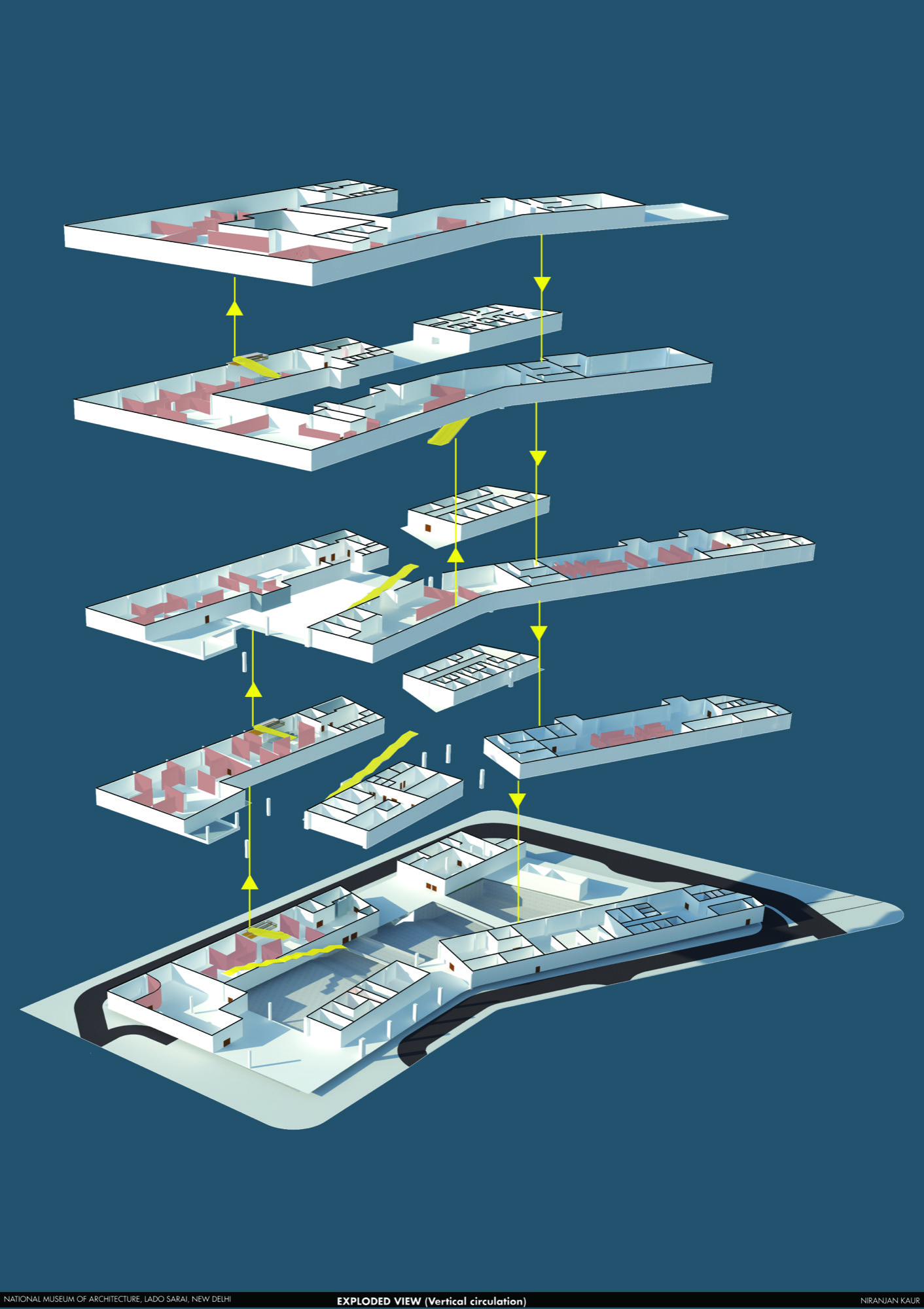

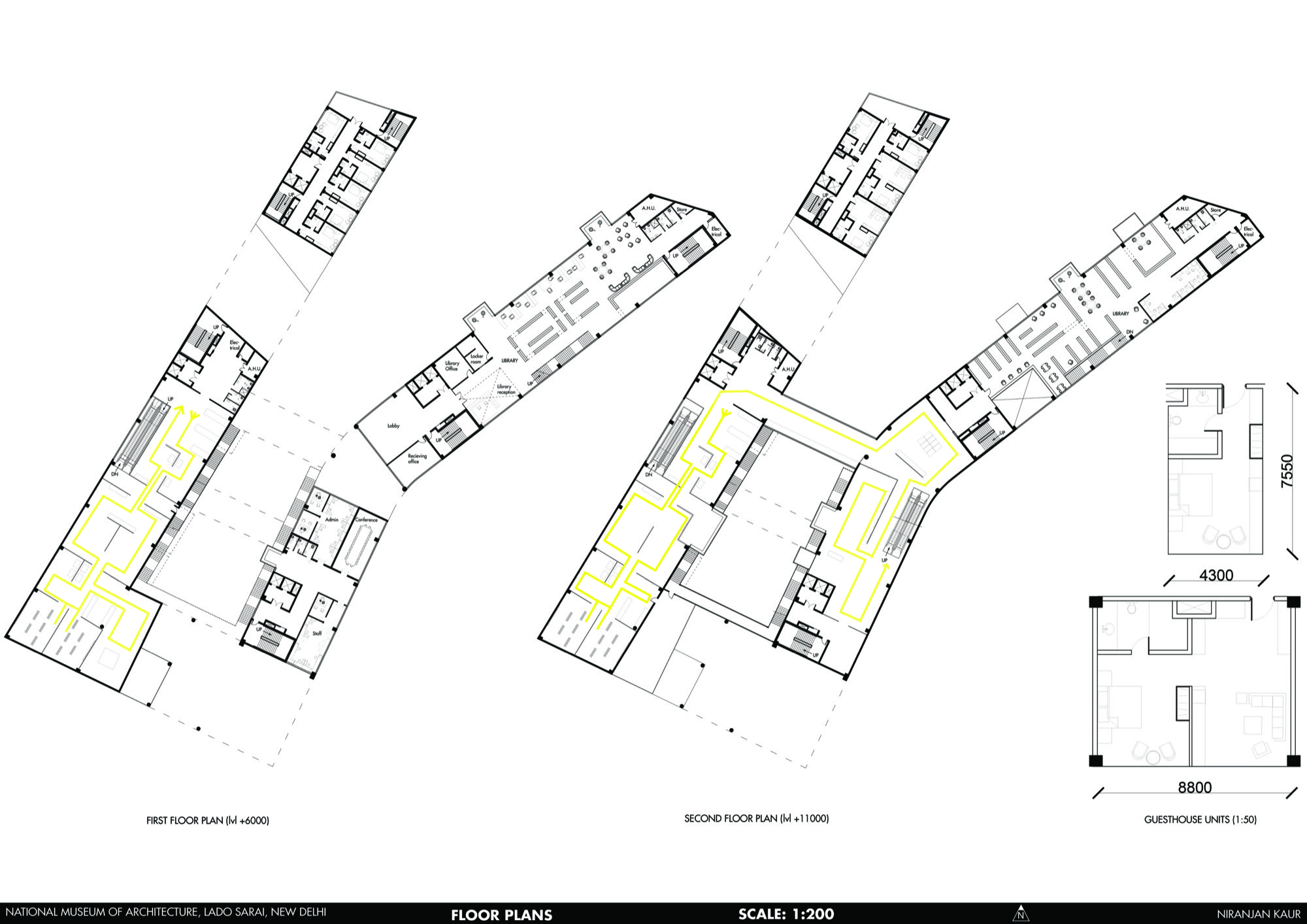

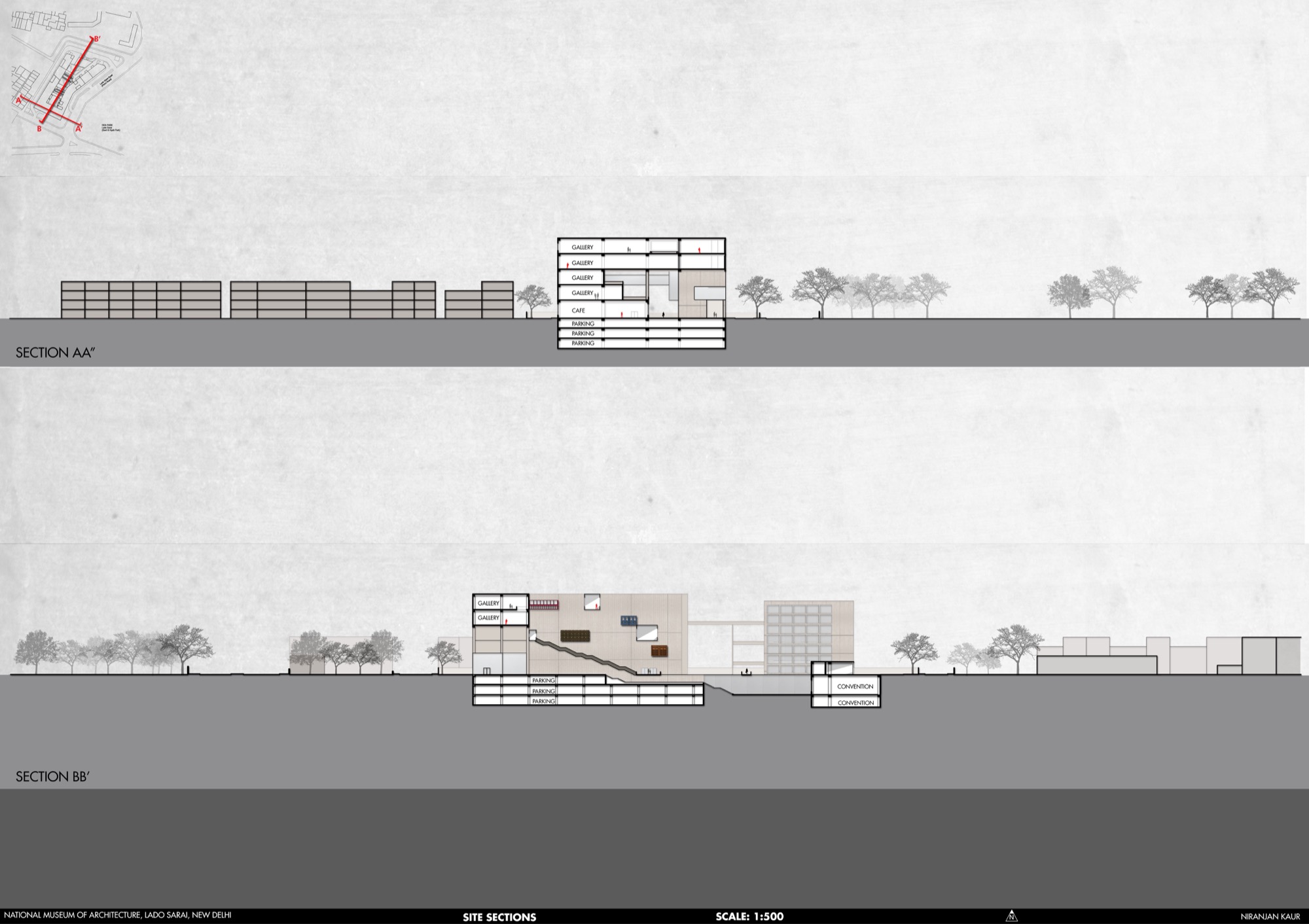
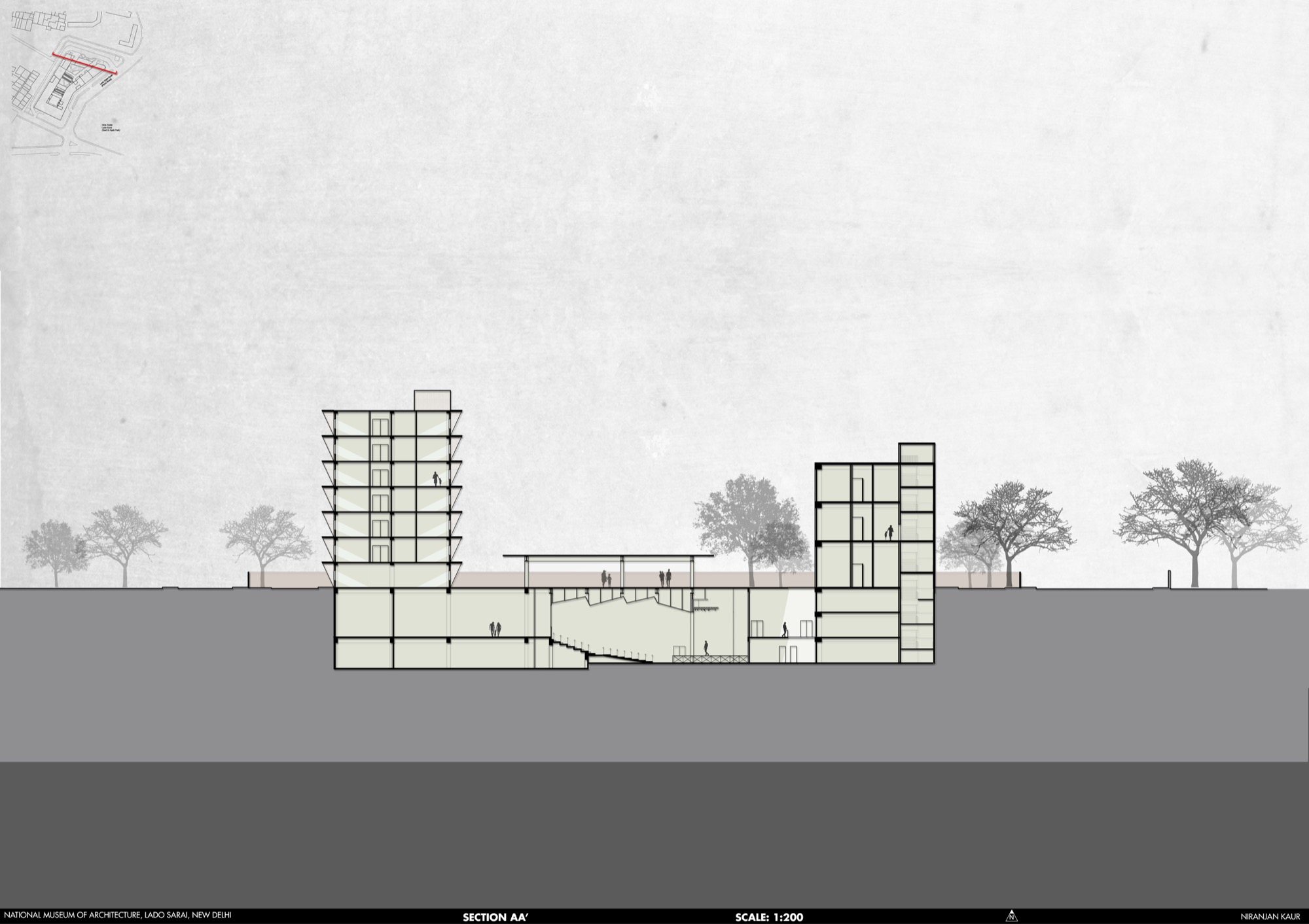
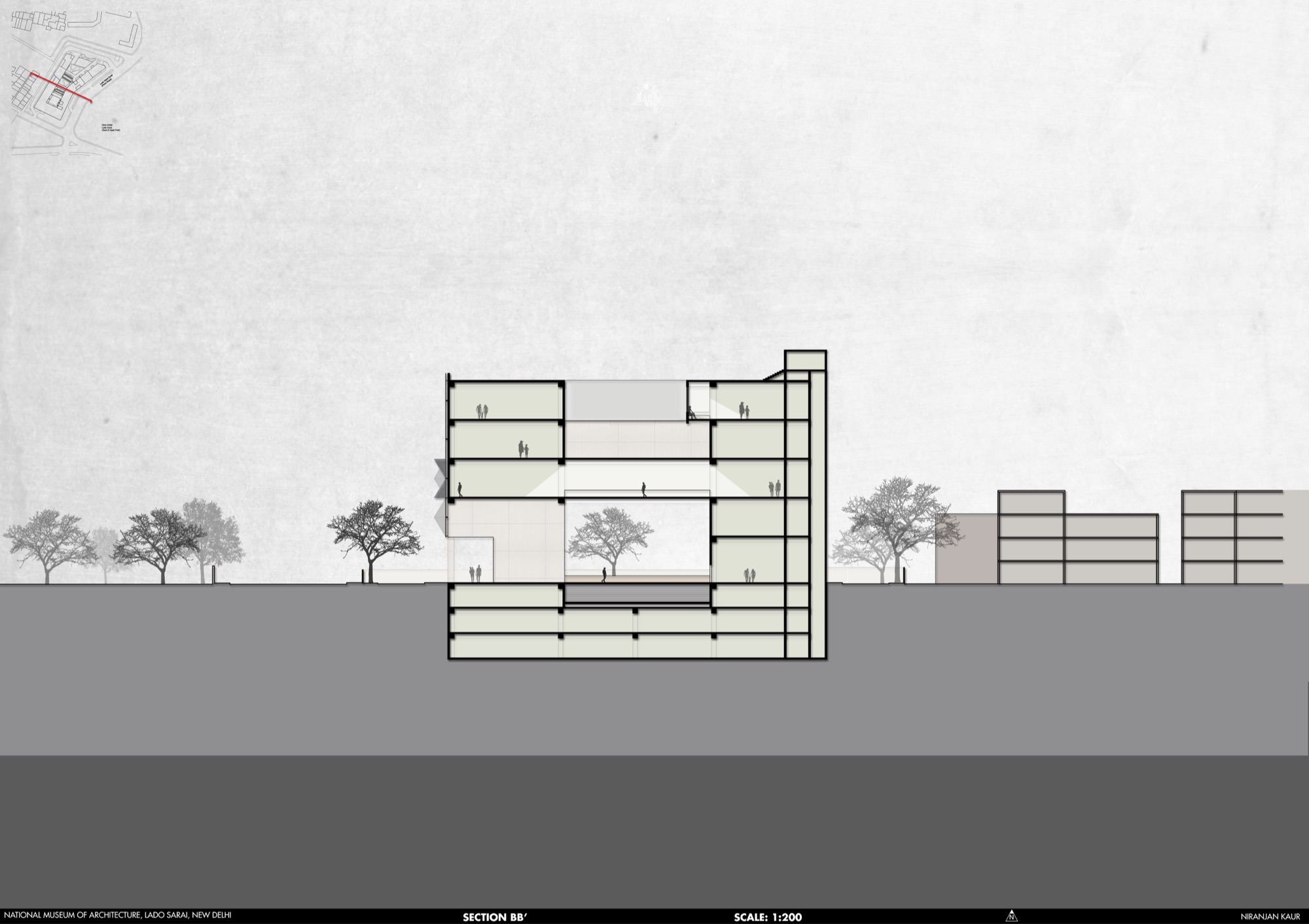

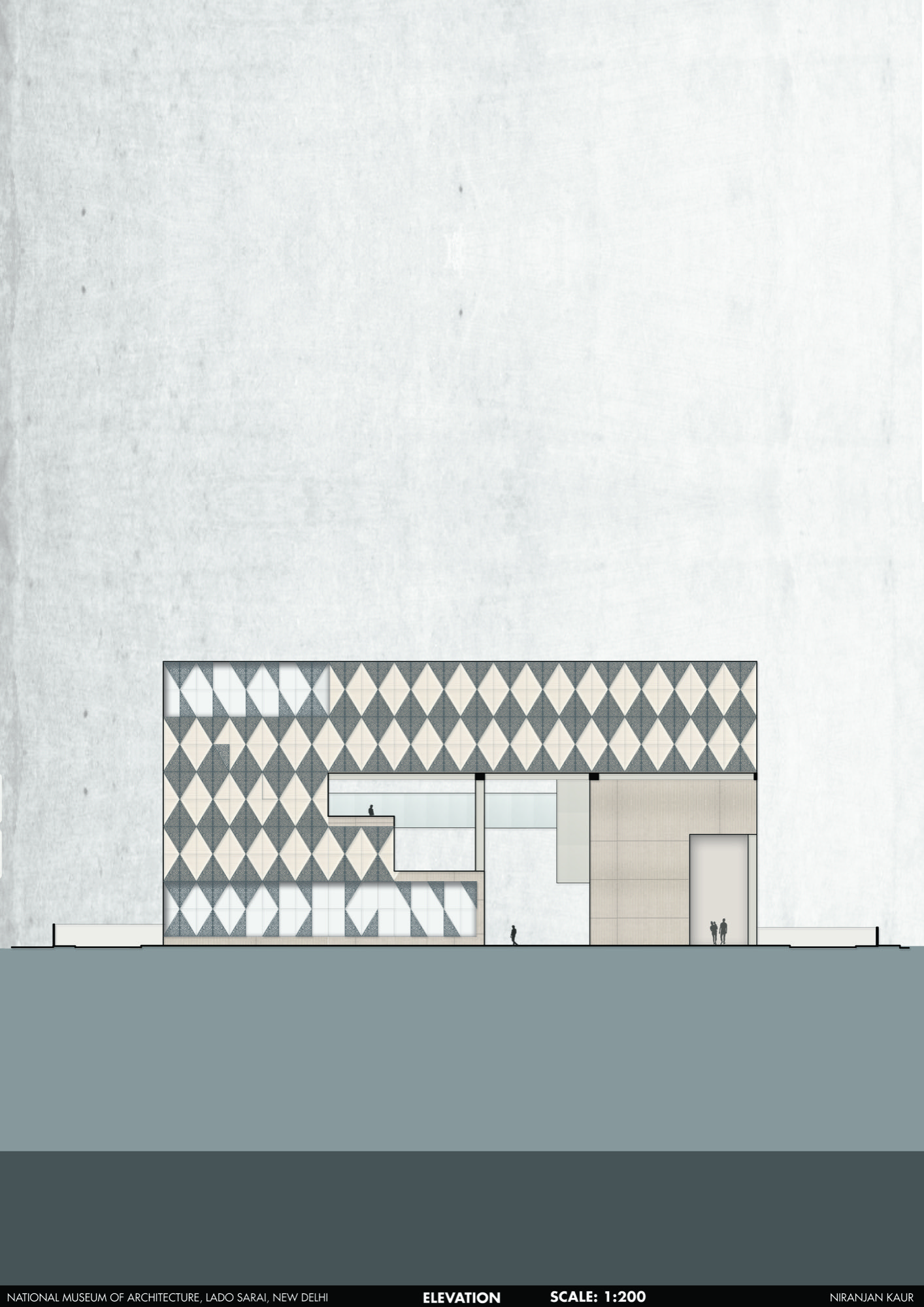

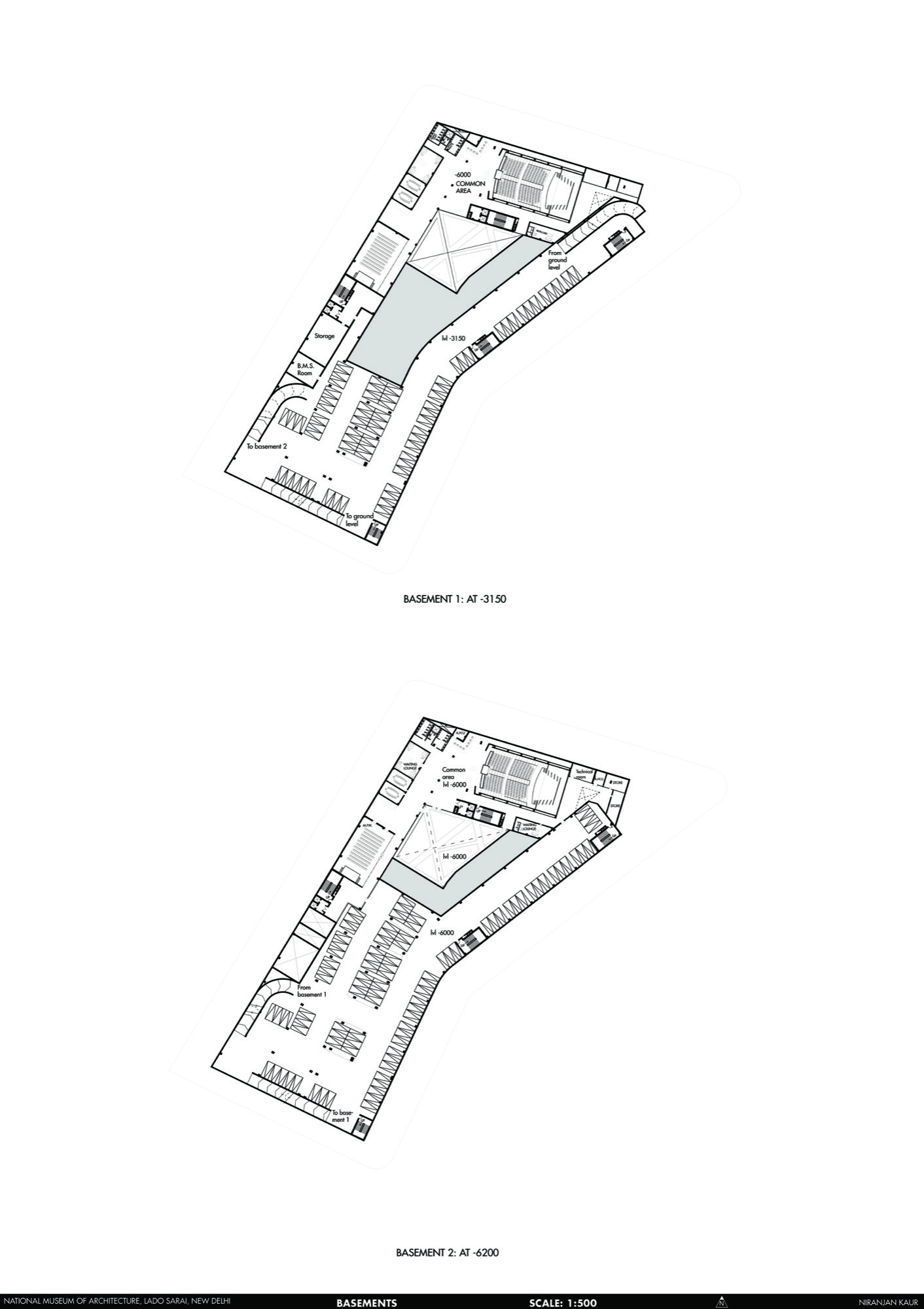
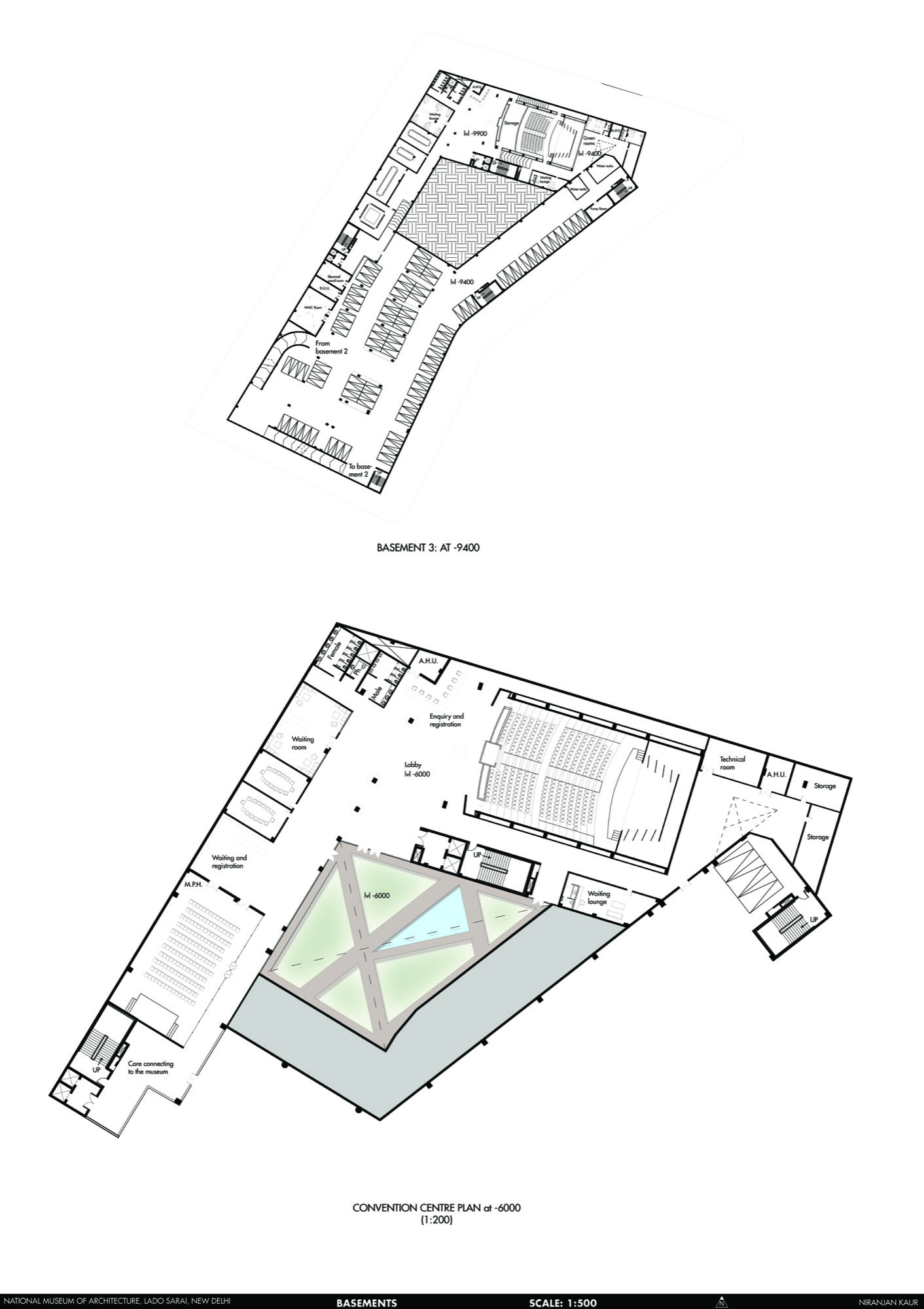







11 Responses
Can I get your complete report ,please even i have some similar thoughts for the thesis project.
Is this the actual proposed site for the project ?, because I am opting for similar building and can’t find a relevant source to confirm it ..
Hi Dipangshi,
There was a concept report of proposal prepared by the firm working on the museum. That is what helped me confirm the site.
mam i need your proposal report so plz can you give me ?
Can you pls share me the name of that firm who is working in it?
heyy by any chance did u get the firm name
hey by any chance did u get the proposal?
Ma’am please confirming site area?
Can u please tell me measurements from all sides od site plan please
hi, can you please tell the name of the firm who is working on this museum. its very important.
Hello Can I get your Full Report and site proposal please, Because i too have some similar thoughts for architectural research institute and Museum complex for my thesis project.